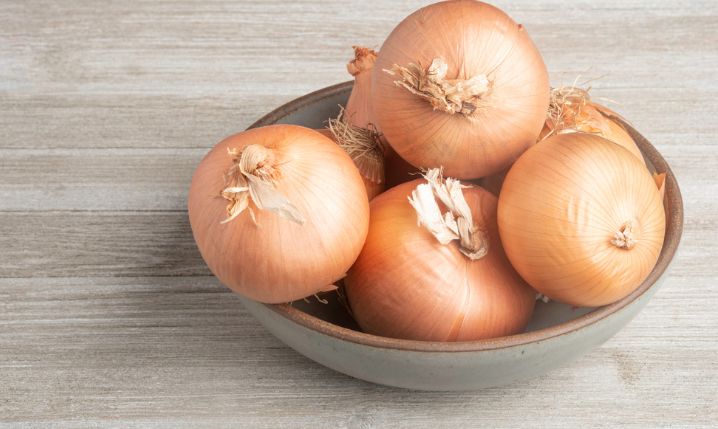There are many types and varieties of onions that you can use in a dish. Oftentimes you have the choice between two or need to find out the differences for other reasons. In this article, we’re exploring what you need to know when comparing the Vidalia vs. sweet onion.
Contents:
What Are Vidalia Onions?

Vidalia onions are native to Vidalia, Georgia, in the United States. The Vidalia onion is a type of sweet yellow onion with a strong reputation among chefs and cooks.
Mild and subtly sweet, these onions are best enjoyed eaten raw. You can use them in salads, for pickling, as toppings on sandwiches and burgers, and as a garnish.
Discovered in the 1930s during the Great Depression, the Vidalia onion has been federally protected since 1989, meaning a Vidalia onion must have been grown in Georgia.
What Are Sweet Onions?

Sweet onions are a variety of onion that are sometimes sweeter than other onions. Sweet onions are grown in soil with less sulfur which makes them less pungent and acidic than other onion varieties.
Some of the varieties of sweet onions include:
- Vidalia Sweets
- Maui Sweets
- Texas Sweets
- Walla Walla Sweets
You should use these bright-tasting onions in salads, relishes, as well as garnishes and toppings. They’re not ideal for cooking as they don’t have the same strong aromatic flavors as other onions. However, they can be used for carmelizing uses.
What’s The Difference Between Vidalia Onions and Sweet Onions?
| Vidalia Onion | Sweet Onion |
|---|---|
| Type of sweet onion. | Includes many onions, including Vidalia. |
| Best for pizzas, salads, salsas, burgers, and carmelizing. | Best for pizzas, salads, burgers, and pickling. |
| Tastes mild and sweet. | Tastes mild and sweet. |
| Brown-yellow skin with large oval bulbs. | Size and shape vary, with colors that differ from brown, to white, to pale yellow. |
As you now know, the Vidalia onion is, in fact, a variety of sweet onion. Therefore there are few differences between the two. However, not all sweet onions are the same. Here are a few differences between Vidalia onions and other sweet onion types.
- Size: The Vidalia onion is larger and squatter in appearance than other types of sweet onion, such as the Walla Walla, which is much smaller. Vidalia onions are typically quite large on the whole.
- Appearance: Vidalia onions are brown-yellow in color. They are large sweet onions with a more squashed appearance owing to the width often outstripping the height. Other sweet onions can vary in appearance dramatically, with brown, white, and pale yellow skins all common among them.
- Taste and Texture: Both Vidalia onions and sweet onions have a crunchy texture with a mild and sweet flavor.
- Culinary Uses: You can use all sweet onions, including the Vidalia, for thinly slicing over pizza, topping burgers, eating raw in salads, salsas, and similar uses. They’re not typically recommended for many cooking uses.
Conclusion
The main difference between the Vidalia onion and sweet onion is that the Vidalia is simply one type of sweet onion. It can still be useful to make the comparison between sweet onions because there can be subtle or important distinctions between their key features that can affect the outcome or quality of your dish.